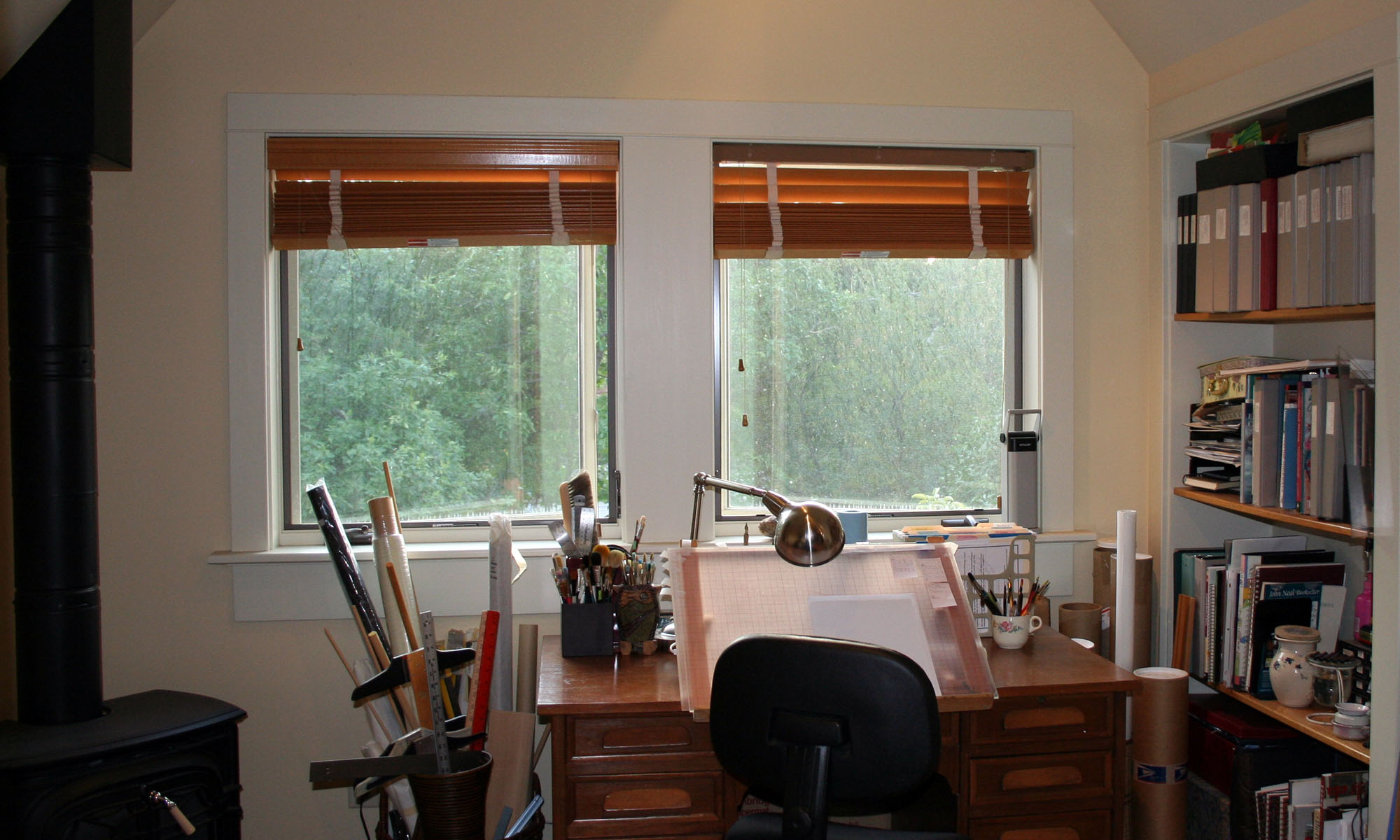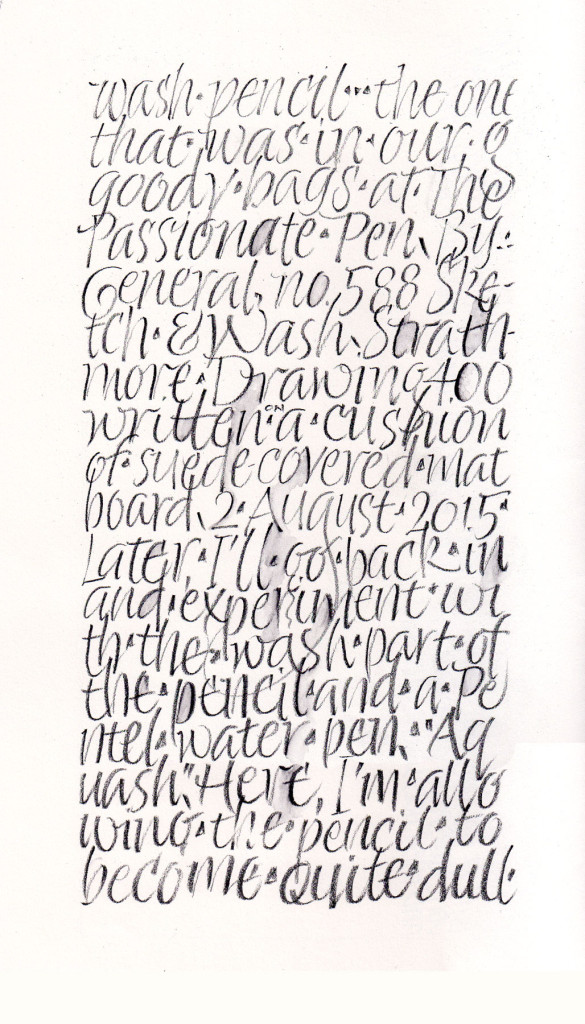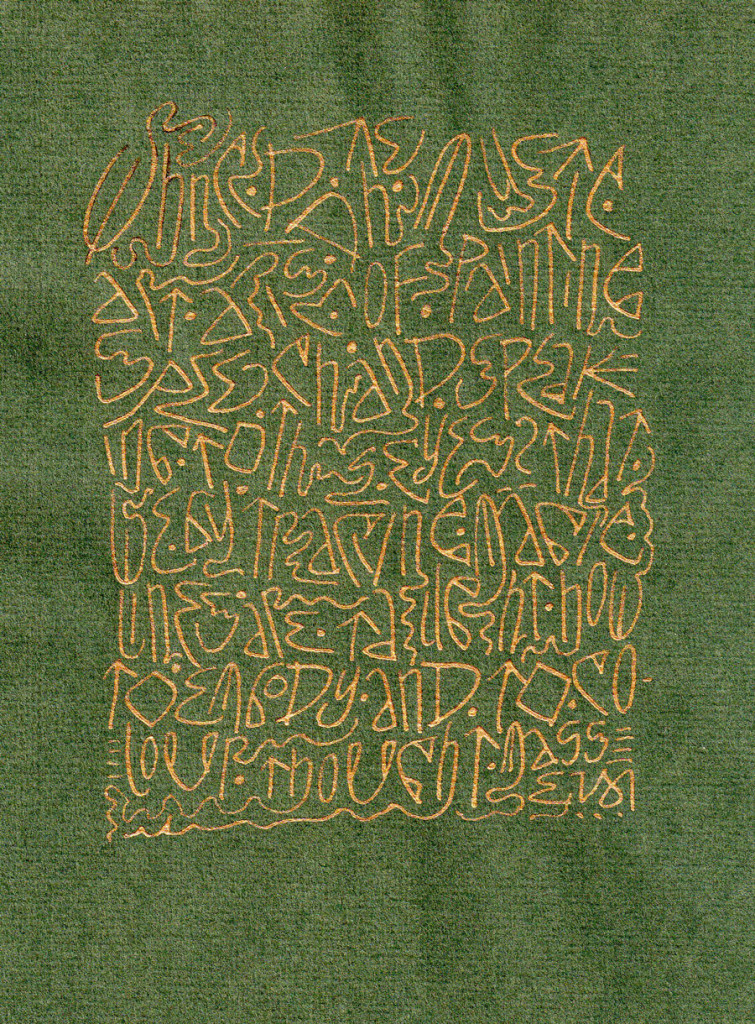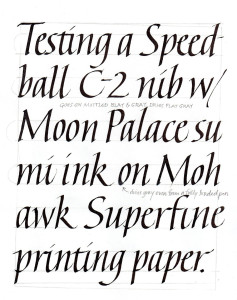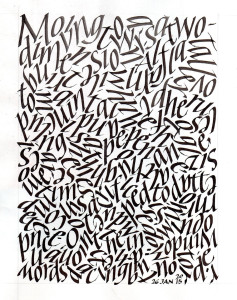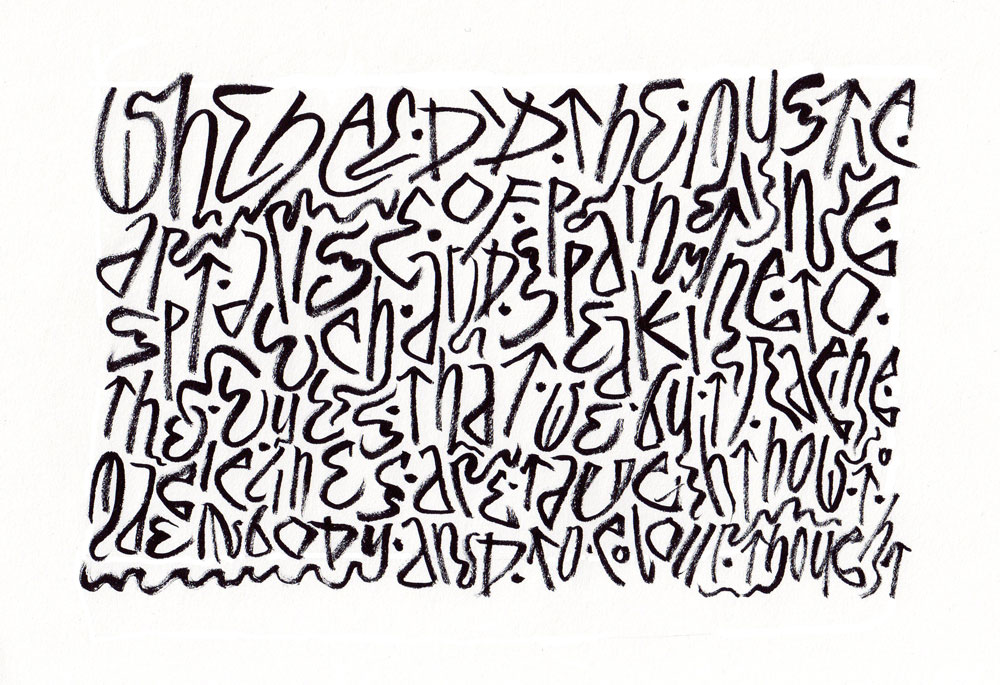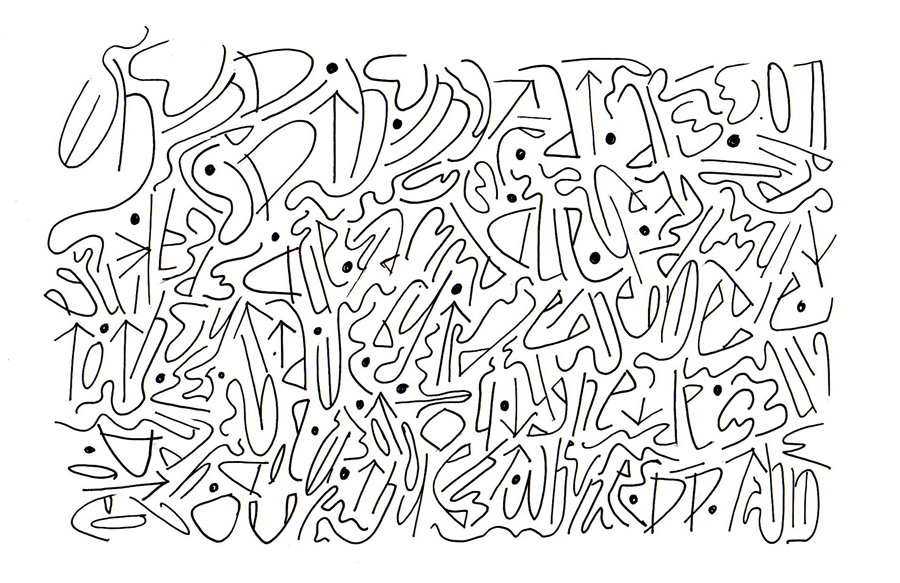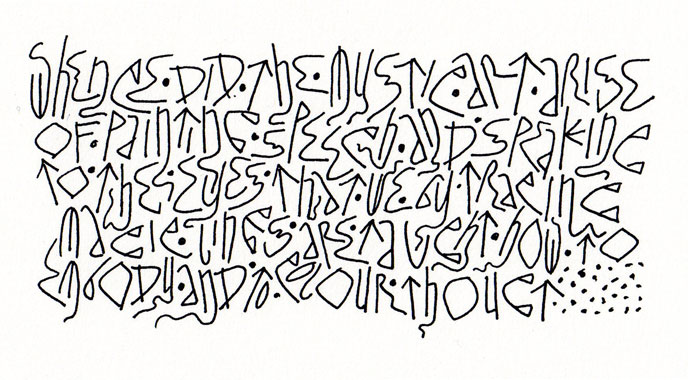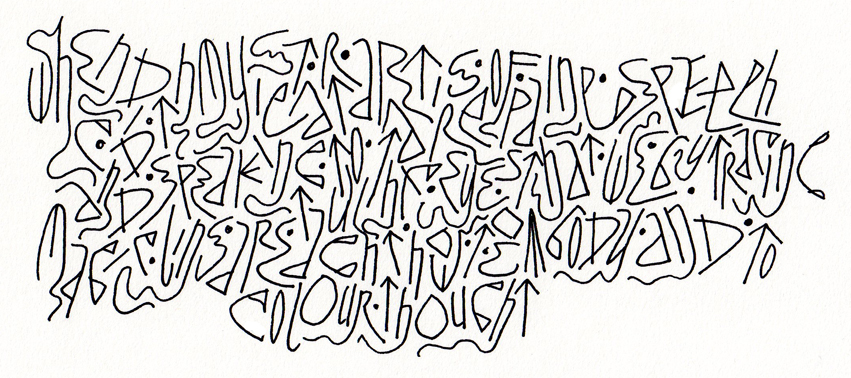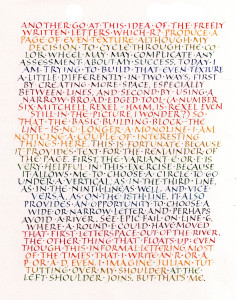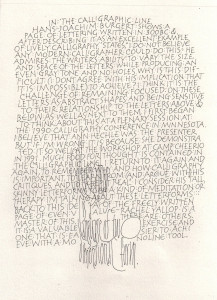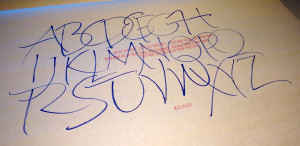
Trying to improve on one of the daily lettering pieces I did on Sunday. You can’t step in the same river twice, and often diverting the flow has unintended consequences. Even though I didn’t like Sunday’s E while I making it, that Sunday E is much better than today’s. Sunday’s H was cramped, probably because I was conscious that I was getting to the right edge of the paper; this one is a better shape but not a better line. In general, the lines are much better on Sunday’s sheet. Only now as I look at the photo of today’s work do I see that I skipped the down stroke of the T. Or, to be more accurate, made it do double duty as the first stroke of the U. I was thinking ahead to the V, which was not good on Sunday’s sheet — way too narrow, for one think. Today’s is still narrow, but I don’t mind it as much because I haven’t allowed the W to encroach. Much better X on Sunday’s sheet. I could go on, but here’s another page from today’s daily lettering:
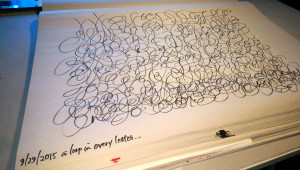
I have a love-hate relationship with loops in letters. I generally hate mine, I often hate loops made by other people, but I love loops made by a few wonderful calligraphers who really know how to swing it. I though that I might use loops to generate a certain texture — I’m back to reading Burgert’s Calligraphic Line again.
